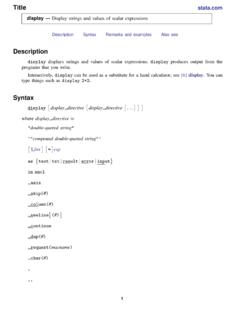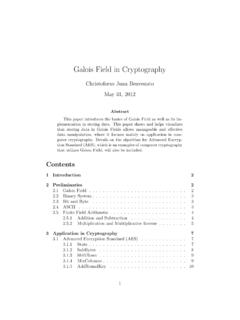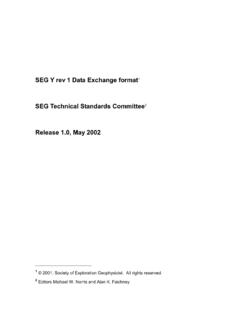Extended Ascii
Found 6 free book(s)Data Representation
home.adelphi.edu• The ASCII code for an uppercase Ais 1000001. Representing Text • Extended ASCII is a superset of ASCII that uses eight bits for each character. • For example, Extended ASCII represents the uppercase letter Aas 01000001. • Using eight bits instead of seven bits allows Extended ASCII to provide codes for 256 characters.
Syntax - Stata
www.stata.comchar(#) displays the character for ASCII and extended ASCII code #, where # > 127 is treated as a Latin1-encoded character and will be converted to the corresponding UTF-8 character, displays one blank between two directives,, places no blanks between two directives.
Galois Field in Cryptography - University of Washington
sites.math.washington.eduASCII stands for American Standard Code for Information Interchange. Since there are exactly 255 characters in ASCII, we can uniquely assign 3. each character to an element in gf ... inverse is by using Extended Euclidean Algorithm. The details on the calcu-lations in gf(28) is best explained in the following example.
SEG Y rev 1Release 1
www.seg.org• The data in the Extended Textual File Header uses a stanza layout and standard stanzas are defined. • Trace identification is expanded. • Engineering conversions are introduced. • The Textual File Header and the Extended Textual File Header can be encoded as EBCDIC or ASCII characters. 2.3. Notation
E-EDID VESA ENHANCED EXTENDED DISPLAY …
glenwing.github.ioVESA ENHANCED EXTENDED DISPLAY IDENTIFICATION DATA STANDARD (Defines EDID Structure Version 1, Revision 4) Release A, Revision 2 September 25, 2006 Purpose The E-EDID Standard defines a remotely readable (read by a source) data file stored in an electronic display.
Using GNU Fortran - GNU Compiler Collection
gcc.gnu.orgUsing GNU Fortran For gcc version 12.0.1 (pre-release) (GCC) The gfortran team





